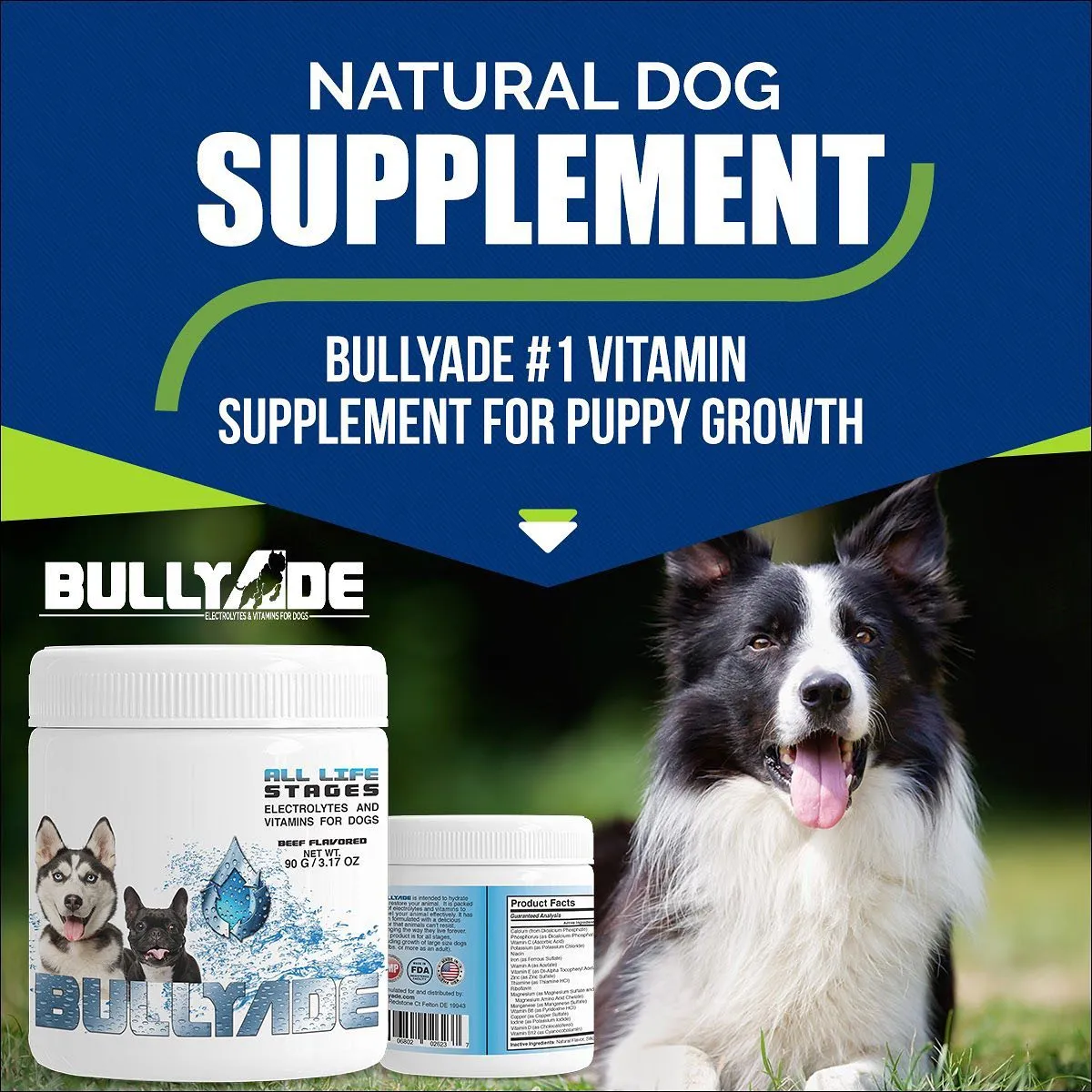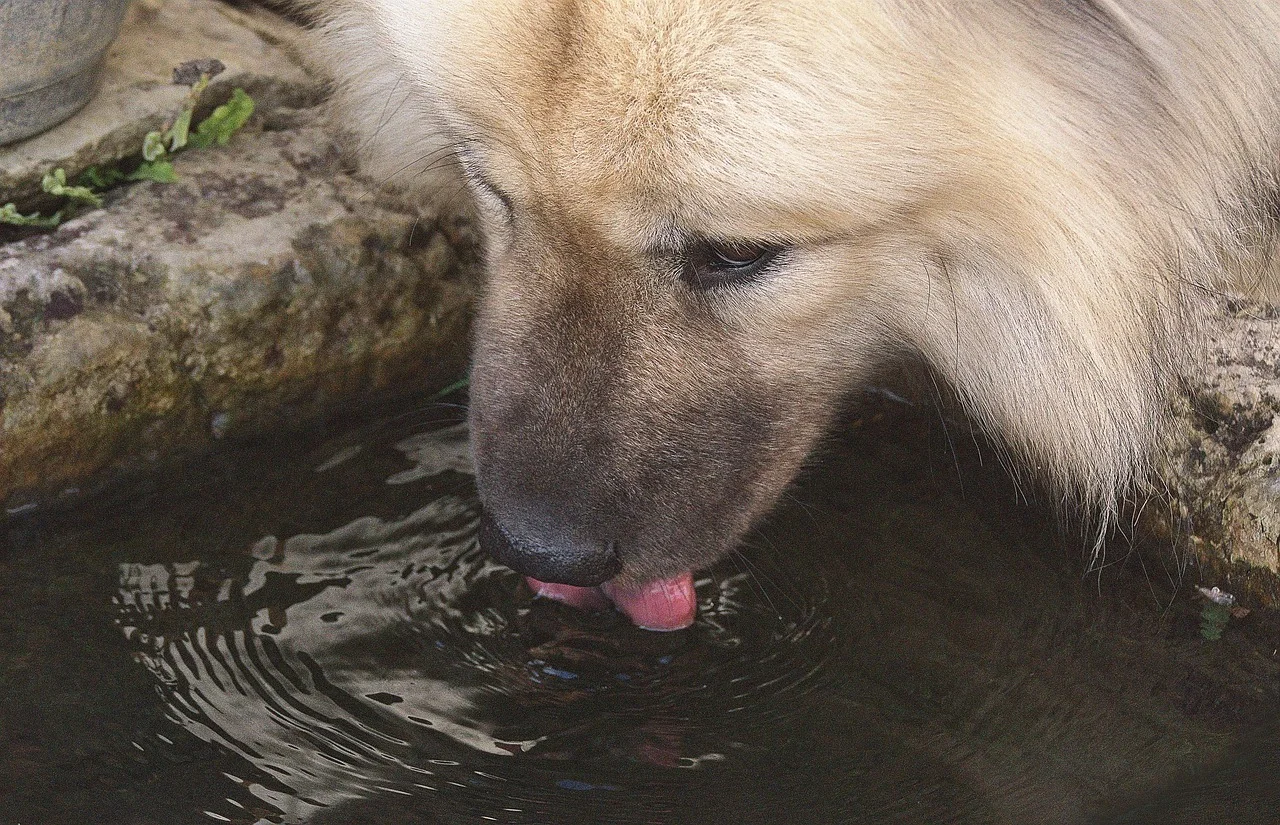If you have been wondering how to make your dog drink more water, why your dog is not drinking at all, or what the signs of dehydration are in your furry friend, you have come to the right place!
Water is essential for every living creature, and dogs are no exception. Hydration is crucial in maintaining your furry friend’s overall health—helping with digestion, circulation, temperature regulation, and even joint lubrication. But what if your dog isn’t drinking enough water?
A dog that doesn’t consume enough fluids can quickly become dehydrated, leading to serious health risks. So, as a responsible pet owner, how can you ensure your pup stays hydrated? In this article, we’ll explore the reasons why your dog may not be drinking enough water and provide seven proven tips to encourage them to drink more.
How Much Water Should Your Dog Drink Daily?
The amount of water a dog needs depends on several factors, including size, diet, activity level, and weather conditions. A general rule of thumb is:
Dogs need about 1 ounce (30 millilitres) of water per pound of body weight each day.
For example:
- A 10-pound dog needs at least 10 ounces of water daily.
- A 50-pound dog requires about 50 ounces of water daily.
- A large 100-pound dog should drink 100 ounces of water per day.
However, active dogs, nursing dogs, and those in hot climates may need more water to stay properly hydrated.
Signs of Dehydration in Dogs
If a dog doesn’t drink enough water, dehydration can set in quickly. Watch out for these warning signs:
- Dry Nose and Gums – Healthy dogs have moist noses and gums. If they appear dry or sticky, it may indicate dehydration.
- Loss of Skin Elasticity – Gently pinch the skin between your dog’s shoulders and release it. If it doesn’t snap back quickly, your dog might be dehydrated.
- Lethargy or Fatigue – Dehydrated dogs tend to feel weak, sluggish, or unresponsive.
- Sunken Eyes – If your dog’s eyes look sunken or hollow, this may be a sign of severe dehydration.
- Excessive Panting – Dogs regulate body temperature through panting. If they’re dehydrated, panting may become excessive as their body struggles to cool down.
If your dog exhibits multiple signs of dehydration, consult a veterinarian immediately!
Why Your Dog May Not Be Drinking Enough Water
Before jumping into solutions, it’s important to understand why your dog isn’t drinking as much water as they should.
1. Health Issues Affecting Thirst
Certain medical conditions can reduce a dog’s desire to drink, including:
- Kidney Disease – Dogs with kidney disease may drink more or less than usual.
- Diabetes – This condition can cause excessive thirst or a lack of it.
- Urinary Tract Infections (UTIs) – UTIs can make drinking water uncomfortable.
- Dental Issues – Tooth pain, gum infections, or injuries can make drinking painful.
If your dog suddenly refuses to drink, a vet visit is essential to rule out health problems.
2. Environmental and Behavioral Factors
- Unfamiliar Surroundings – A dog may hesitate to drink in a new environment.
- Dirty Water Bowls – Dogs dislike stale or dirty water.
- Stress or Anxiety – If your dog is feeling anxious, they may drink less.
- Bowl Placement – Some dogs prefer a quiet place to drink, away from foot traffic or loud noises.
Now that you understand the reasons behind reduced water intake, let’s explore seven effective strategies to encourage your pup to drink more water.
7 Easy Steps to Help Your Dog to Drink More Water
1. Provide Fresh and Clean Water at All Times
Dogs are more likely to drink water when it is clean and fresh. Imagine drinking from a glass of stale, warm water—would you want to? Neither does your dog!
- Change the water at least twice a day.
- Use stainless steel or ceramic bowls (plastic bowls can develop bacteria and odors).
- Avoid placing the water bowl in direct sunlight to prevent algae growth.
2. Use Multiple Water Stations
Placing water bowls in different locations around your home ensures that water is always accessible. This is especially important for:
- Senior dogs with mobility issues.
- Large homes where dogs may not want to walk far for water.
- Multi-pet households to reduce competition for water.
Tip: If your dog spends time outdoors, place a separate water bowl outside in a shaded area.
3. Incorporate Wet Food into Their Diet
If your dog eats only dry kibble, they may not be getting enough moisture from their diet. Consider adding:
- Wet dog food or canned food (which contains up to 80% water).
- Homemade dog-friendly broths (chicken or beef, unsalted).
- Water-soaked kibble (let it sit for a few minutes before serving).
Not only does this increase hydration, but it also adds flavor to meals!
4. Add Flavor to the Water
Some dogs find plain water boring. Try adding:
- Low-sodium chicken or beef broth
- A splash of goat’s milk (a tasty and nutritious option)
- A few ice cubes made of frozen broth or diluted tuna juice
Pro-tip: Avoid any ingredients like onions, garlic, or excessive salt, which are toxic to dogs.
How to Make Your Dog Drink More Water with Bullyade!

Are you still struggling to keep your dog hydrated? Bullyade is the perfect solution! Packed with essential electrolytes, vitamins, and minerals, Bullyade turns ordinary water into a delicious, nutrient-rich drink your pup will love. Add it to their bowl, and they’ll enjoy the irresistible chicken or beef flavor while staying properly hydrated.
Whether your dog enjoys high-energy workouts or a relaxed couch potato, Bullyade supports hydration, recovery, and overall health. Give your furry friend the best—ORDER BULLYADE TODAY and help them stay hydrated effortlessly!
5. Invest in a Dog Water Fountain
Some dogs prefer running water over still water. A pet water fountain can encourage drinking because:
- The sound of running water is more appealing to dogs.
- Water fountains filter out impurities, making the water fresher.
- It can be fun and interactive, encouraging dogs to drink more.
Popular brands include PetSafe, Catit, and Veken.
6. Regularly Clean Water Bowls
Even if water looks clean, bacteria can accumulate on the bowl’s surface.
- Wash your dog’s water bowl daily with warm, soapy water.
- Rinse thoroughly to remove any soap residue.
- Disinfect the bowl once a week using white vinegar or baking soda.
A clean bowl ensures a clean drinking experience for your dog.
7. Monitor and Reward Hydration Habits
It is possible to encourage your dog to drink more water through a reward based approach;
- Use treats or praise when your dog drinks.
- Keep track of their water intake (especially in hot weather).
- Set a schedule for hydration breaks, just like meal times.
Over time, your dog will associate drinking water with positive reinforcement.
Conclusion
Keeping your dog hydrated is one of the simplest yet most important things you can do for their health. By following these seven proven tips, you can help prevent dehydration and ensure your pup stays happy, active, and healthy.
If your dog is not drinking water or shows signs of dehydration, consult a veterinarian immediately.
FAQS
1. Why is my dog not drinking water?
Your dog may not be drinking due to health issues, anxiety, or environmental factors. If the problem persists, seek veterinary advice.
2. Can certain foods increase my dog’s thirst?
Yes! Salty foods, high-protein diets, and medications can increase thirst. Always ensure fresh water is available.
3. How can I tell if my dog is dehydrated?
Look for dry gums, lethargy, sunken eyes, and loss of skin elasticity. If in doubt, consult your vet.
4. Can dogs drink too much water?
Yes. Overhydration (water intoxication) is rare but serious. If your dog drinks excessively, seek medical attention.
5. Should I be concerned if my dog drinks less in winter?
Yes! Cold weather reduces thirst, but hydration is still important. Try adding warm broth to their water.
I am a dedicated and highly experienced professional content writer and SEO expert. With a passion for creating compelling content and a deep understanding of the latest SEO techniques, I have helped numerous small businesses reach new heights of success.
My expertise lies in crafting engaging and optimized content that not only boosts website rankings but also drives meaningful conversions. I am well-versed in conducting in-depth keyword research, analyzing competitors, and determining the most effective SEO strategies for each unique business.
I am ready to bring my expertise to your team and help you achieve your digital marketing goals.
Find me on;
Website: https://manmadewebsites.com/
Email: hello@digitalmarketingchap.com


